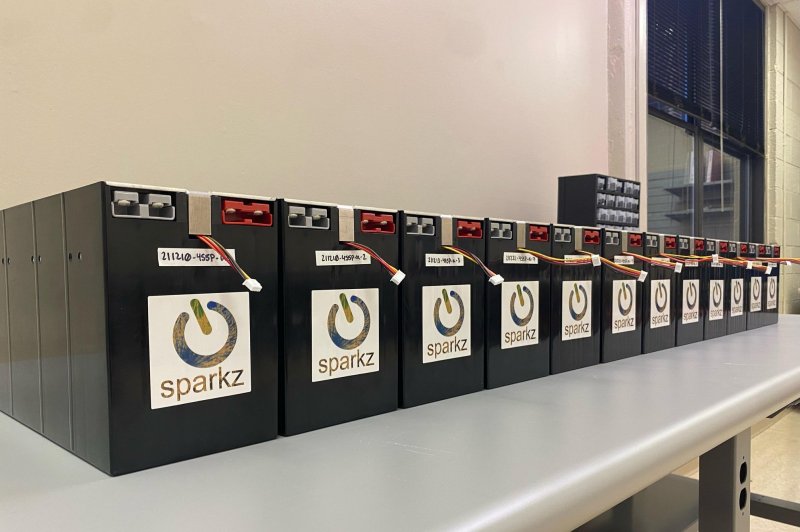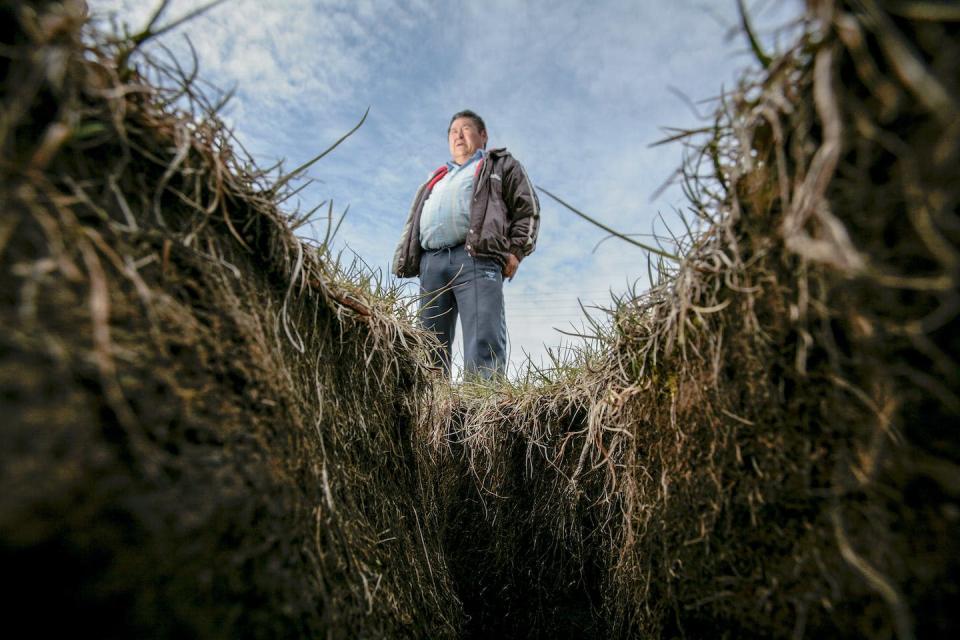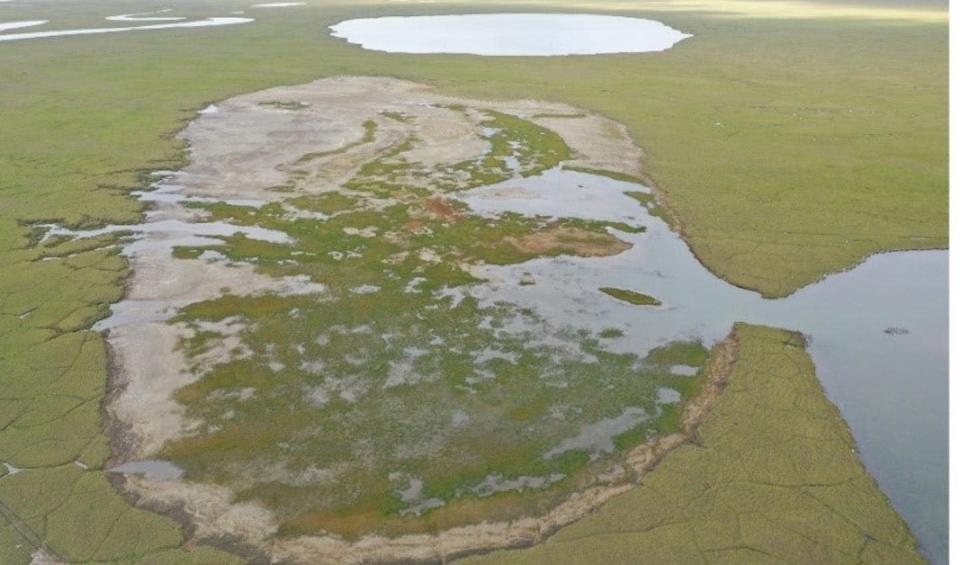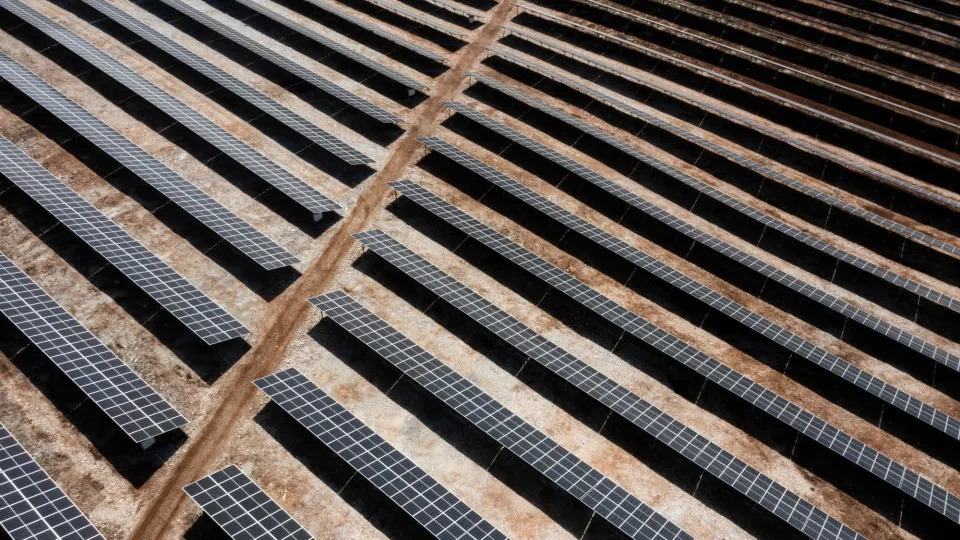Rachel Millard
Tue, April 12, 2022

Wind turbine
Wind turbines set a new record in the first three months of the year, generating almost as much electricity as gas-fired power stations.
Renewable sources overall generated more power than gas and coal for only the second time, according to data from market specialist EnAppSys. It highlights the growth of renewables in Britain’s electricity system amid the push to cut carbon emissions.
However, high gas prices amid a turbulent period on wholesale markets led to record wholesale electricity prices in a situation that is likely to add to calls for market reform.
Paul Verrill, director of EnAppSys, said: “More wind generation was seen this quarter than in any other quarter on record. Renewables exceeded aggregate fossil fuel generation for a calendar quarter. This has only ever happened once before, in the first quarter of 2020.”
Efforts to cut carbon emissions from power generation have driven a surge in wind turbine developments in recent years, with 25 gigawatts of capacity now installed over land and in the seabed, compared to less than 5 gigawatts in 2008.
The capacity is set to rise, with the Government targeting a five-fold increase in offshore wind capacity from about 11 to 50 gigawatts by 2030.
The target was raised from 40 to 50 gigawatts last week amid efforts to cut the West’s reliance on Russian gas.
One of the newest developments, Orsted’s giant Hornsea Two wind farm 55 miles off the Yorkshire coast, generated its first power in December and will be fully operational this year.
Coal now generates less than 2pc of British electricity and this is set to be phased completely by October 2024. Wind typically now accounts for about 20pc of the total, with gas on 35pc and nuclear about 16pc.
Over the past three months, EnAppSys said wind generated 23.3 terawatt hours, about 31pc of total demand and beating its previous record of 23 terawatt hours at the start of 2020.
It accounted for almost 70pc of all generation from renewables, which includes hydropower and biomass. Overall wind generation was more than double that during the third quarter of 2021, when a lull in wind speeds pushed generation down to 10.4 terawatt hours.
Despite the increase in wind power, high gas and coal prices as a result of global gas shortages and Russia’s war on Ukraine led to record wholesale electricity prices.
Day-ahead electricity prices were three times as high as the same quarter in 2021 and six times as high as the same quarter in 2020.
High wholesale gas and electricity prices are now being felt in households across Britain, due to the 54pc increase in the energy price cap at the start of April, pushing average bills up to £1,971.
High fossil fuel prices were “the primary factor” in sustained high electricity prices despite increased wind generation, EnAppSys said.
The way the market works means gas determines the electricity price more so than other sources of power.
There are calls for this to be changed so that wholesale prices better reflect the growing use of renewables, which do not have fuel costs and where installation costs have been falling.
“Record fuel prices meant this was one of the most expensive quarters in the GB market’s history,” EnAppSys added.
Shell to develop 'blue' hydrogen facility in UK in decarbonising push
Shell has struck a deal with a German energy company to produce hydrogen in the Humber as part of efforts to decarbonise the UK’s largest industrial cluster.
Uniper and Shell have signed a “cooperation agreement” to make the gas at the German utility's site in Killingholme, from where it could then be used by heavy industry across the area.
While it is more likely to be used for industrial purposes, the hydrogen produced at the 720MW plant would be enough to heat about half a million homes per year, the companies said.
Hydrogen does not produce carbon emissions when burned, and politicians hope it can replace fossil fuels in industry, heavy transport and potentially some home heating as the UK tries to cut emissions to net zero by 2050.
Shell and Uniper plan to produce hydrogen from natural gas. This is the most common method currently used to make hydrogen, but is in itself a vast source of carbon emissions.
To make this hydrogen "low carbon", they plan to capture and stash the emissions from this process under the North Sea, using carbon capture technology which has yet to be deployed at scale in the UK.
Mike Lockett, Uniper UK country chairman, said the plans represent a “significant step towards decarbonising the UK’s largest industrial cluster” and have the “potential to secure and grow the region’s economy.”
David Bunch, country chair at Shell, said the company was “ready to play our part in ensuring an orderly transition to net zero while bolstering the UK’s energy security.”
Shell plans to invest £25bn in the UK over the next decade, 75pc of which in "low carbon" products, he added.
Greg Hands, energy minister, said the announcement shows “real confidence” in hydrogen calling it a “cutting-edge new super fuel.”
Ministers are hoping that both the production and use of hydrogen will grow rapidly in coming years.
In their energy security strategy published last week amid efforts across the West to cut reliance on Russian gas, they doubled the target for low carbon hydrogen production capacity by 2030, from 5GW to 10GW.
They said at least half of this should come from hydrogen produced through electrolysis, a process which, unlike production from natural gas, does not generate carbon emissions.
The Shell and Uniper project is among several planned hydrogen projects in the UK, including BP’s proposed plant in Teesside which will also make hydrogen from natural gas with carbon capture.
Many developers are waiting on final details of government support for emerging hydrogen and carbon capture industries before making firm investment decisions.
Shell and Uniper will now work on process design studies and site development activity, they added.

























